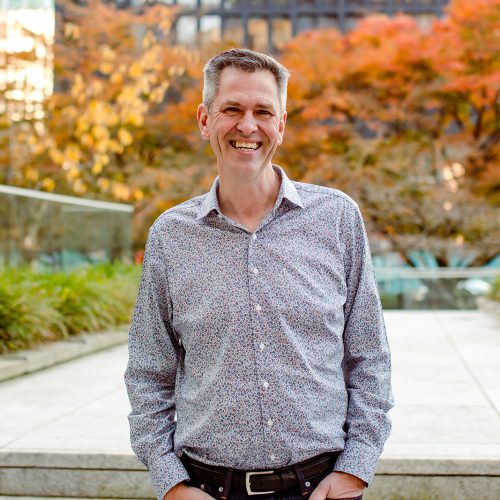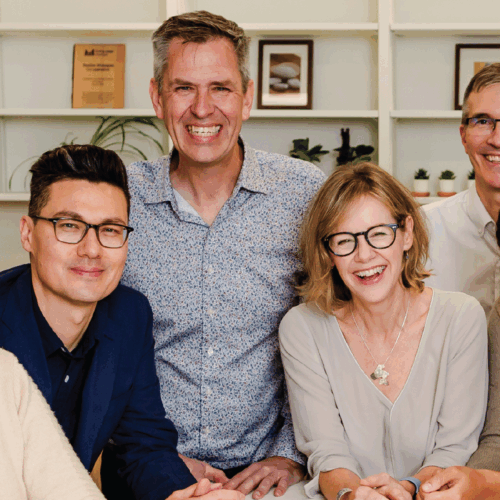Dear Non-profit Board Member: Are You Harnessing or Hindering Innovation?
Published on April 27, 2021
Dear Non-profit Board Member,
Let me start this letter by thanking you sincerely for agreeing to serve on a non-profit. It’s incredibly important work. You’ve chosen to sacrifice time with friends and family. You may even have given up an opportunity to make money — possibly a lot of money. Instead, you’ve chosen to volunteer your time, energy, and experience to serve your community. And let me just say: it doesn’t matter whether you’re serving on the Board of the Ford Foundation, a community arts organization, or a homeless shelter. The point is you’re dedicating your time and energy to help build a better world.
The breakdown
You may not realize it, but without a thriving non-profit sector we wouldn’t have a functioning private sector economy — or a functioning democracy for that matter. Contrary to popular belief, the private sector can’t do everything. Neither can governments.
Now, don’t get me wrong. This isn’t some sort of rant about the evils of capitalism or market economies. Nor is it a condemnation of government. Government isn’t the problem — as Ronald Reagan once said. It’s a vital part of the solution.
There is no question — at least in my mind — that the private sector does certain things very well. It allocates capital effectively. It commercializes technologies and innovations developed by universities and government research institutions. It finds new ways to solve consumer needs and adapt markets to meet the challenges of today and tomorrow. Whether it’s the development of e-bikes, promising new ways to cleanup and repurpose ocean plastic or a bringing to market a dozen other promising innovations, the private sector is vital to our economic and social well-being.
Governments have a critical role to play as well. We depend on government to help set and enforce the rules of the game: the rules that govern how our markets and our society work. We also rely on governments to administer and fund programs that help lift up and protect our most vulnerable fellow citizens. While governments occasionally partner with the private sector to deliver programs, most of the time they turn to the non-profit sector for help in delivering those critical programs.
But the non-profit sector is the Jenga piece that holds our society together. And your volunteer service — whether it’s on one non-profit board or five — ensures government and the private sector can fulfill their critical roles in our society. Take a moment to pat yourself on the back. You’ve earned it.
And in case you’re wondering, I have served on many non-profit boards myself — local, national, and international. So, I know what it’s like to be in your shoes.
Now, let me get to the really tough question; the reason I decided to write this letter. You might not like what I have to say. But remember, I’m one of you. And what I have to say comes from experience.
My question to you is a simple one: as a non-profit board member, are you harnessing innovation or hindering your organization’s ability to reach breakthrough solutions to tough problems?
Are you harnessing innovation or hindering your organization’s ability to reach breakthrough solutions to tough problems?
In other words, what I’m asking is: when you’re confronted with an idea that could be a game-changer for your organization and — most importantly — for the people and community you serve, are you championing it or standing in the way? When I ask if you’re standing in the way, I don’t mean that you’re asking probing, thoughtful questions to make sure you understand the idea, how it will benefit end-users, the risks that it could pose to your organization and the strategic trade-offs it might entail. When I talk about standing in the way, I mean that you object to the very idea of your non-profit taking a fresh approach — maybe even a risky one — to benefitting the people your organization serves.
Breaking the cycle of poverty
To illustrate my point, I want to tell a story about a non-profit organization I worked with several years ago. Full disclosure, I worked with the organization as a consultant, but I approached the project with the mindset of a board member and someone who believes in trying new ideas and approaches to solve tough problems.
The organization, which I’ll call Three Corners, provides a wide range of community services in a suburban region comprised of three commuter cities. One of its most important roles involves helping individuals and families who are experiencing poverty. The CEO at the time — I’ll call him Larry — was a visionary leader. Larry has spent his career alternating between the private and non-profit sectors. From our very first phone call, Larry struck me as a guy who has a genuine passion for trying to find innovative solutions to entrenched problems.
When we met for the first time, Larry explained that he had high regard for the work his agency did to support individuals and families experiencing poverty. But he also felt that their programs were keeping people in poverty — rather than helping them break the cycle of poverty. Larry believed strongly that no one wants to be trapped in poverty. But he believed that organizations such as his were critical to equipping individuals and families with the skills needed to help them get back on their feet.
The brief
Larry’s brief to us was simple and — at the same time — daunting. He asked us to do nothing less than to redesign all of the programs his organization offered to individuals and families experiencing poverty. He told us he wanted innovative ideas, and handed us a thick binder full of articles on innovations in food banks and food security from across North America.
When I told Larry about my recent experiences visiting social enterprises in the UK — and how they were providing training and employment to formerly homeless people, and new sources of revenue to non-profits, he practically leapt out of his chair. He told us, “I want you guys to find the best operating models out there. See if they could work for us. All good ideas are on the table.” He told us he wanted his agency to be a catalyst for social innovation — and a catalyst for improving the lives of individuals and families experiencing poverty. To add a nice bit of complexity, Larry also told us that his clients spanned over 40 language groups and many different religions and cultures — all key elements of the story that would inform our work.

Research and observation
Armed with that simple but challenging brief, we set to work. We conducted extensive desk research. We looked at breakthrough innovations in food security and food banks in Toronto, San Francisco, and Detroit. We delved deeply into the global social enterprise sector, looking at models such as The Brigade Bar + Kitchen in London UK — a social enterprise restaurant that provides jobs and training to homeless youth. We looked at how community gardens and food trucks could help provide jobs, teach critical skills, generate revenue, and revolutionize Three Corners’ entire approach to community programs.
We were equally vigorous in our field research. We conducted a public survey about community attitudes to poverty and sought the community’s ideas on how we provide better services to help individuals and families escape poverty. We met with local leaders — politicians, businesspeople and newspaper editors — to seek out their insights and ideas. We interviewed Three Corners’ program leaders and toured key facilities to learn first-hand how things operated. We held focus groups with clients of Three Corners’ very busy food bank, and spent time observing how clients interacted with it.
Key findings
What we learned was both revealing and shocking. We learned that single moms had to line up at 6:00am to get a ticket for that day’s food bank. Once they had the ticket, they had to go away and then return at 9:00am when the food bank opened. We learned that this complicated choreography made it very difficult for many single moms to get their kids to school, make it to the food bank to pick up their basket, and get to work on time. We learned that much of the food offered by the food bank — all donated by well-meaning community members — wasn’t culturally appropriate to many of the families who relied on it.
We also learned that individuals and families — and even local leaders and advocates — faced the nearly impossible task of trying to navigate through a fragmented and disconnected maze of support programs offered by Three Corners and a host of other community agencies. The net result was a system that worked for these non-profit organizations, but not for the clients they were meant to serve.
Red flags
During one of our project update meetings, I talked to Larry about my recent visit to their thrift store. I shared my observation that thrift stores — while common to many community-based non-profits — had limited capacity to provide job training or employment.
After listening to my report, Larry remarked,
“our Board is very proud of the thrift store. They believe it’s a really innovative and impactful program.”
Larry went on to tell me that a local restauranteur had offered Three Corners one of his restaurants, at no cost, to operate as a social enterprise. Larry’s Board turned down the offer because they believed it would put them in competition with other restaurants in the community. Those were two big red flags — waved right in front of us and our project. But Larry wanted us to continue our work.
And so, continue we did. At the end of six months of intense research and design work, we produced a sweeping blueprint to transform Three Corners from a poverty-serving agency to catalyst for empowering individuals and families experiencing poverty. Our report envisioned an entirely new model for Three Corners’ programs. We envisioned an interconnected web of local urban farms and community gardens, food trucks, community cooking and nutrition programs, and a community food card program that provided access to food through local grocers.
We also envisioned the creation of a personalized navigator program to help clients co-create and access the services and supports they needed to transition out of poverty. Our model tackled the many challenges we uncovered through our research. It created a flexible, culturally relevant, model for food security. It provided local leaders and advocates with a single window model to help individuals and families access information and services easily and effectively. It provided the hardworking staff of Three Corners with new ways of working together to deliver services. Above all, it provided a model to help individuals and families break the cycle of poverty. Larry was very pleased with the result. He asked us to present our findings and recommendations at an upcoming meeting of his Board of Directors.
Board pushback
Over the course of an hour, we laid out our research and our recommendations. We told the Board that the blueprint we produced would be transformative. It would be a major contribution to the community and to the broader work of tackling the corrosiveness and the stigma of poverty.
Things seemed to be going well until we opened the floor for discussion. As Board members started making their comments, we thought we’d been hit by a taser. One Board member asked us if we’d validated our findings against the academic literature on poverty and the social determinants of health. We explained that we had looked at the literature, but it didn’t address the issues we’d uncovered in our research. We told the Board that we’d looked at the lived experience of other organizations — both non-profits and social enterprises — across North America and the UK. We explained that our recommendations were based on the direct feedback we received from clients and community leaders.
Another Board member objected vociferously to our proposals. He argued that we were “letting government off the hook”. In other words, by creating mechanisms and programs that would enable Three Corners and its clients to be more self-sufficient, we were letting public agencies transfer their responsibility for funding programs onto the backs of local taxpayers. His argument caught fire. Other Board members chimed in. In short order, the consensus around the board table was:
“well, these are interesting ideas, but if anyone is going to launch them, it should be the government. We shouldn’t be letting our public funders off the hook. We shouldn’t be taking these kinds of risks or setting ourselves up to compete with our local businesses who support us so generously.”
We were deflated. When I spoke to Larry the following week, he was stoic but the disappointment in his voice was unmistakeable. Not surprisingly, Larry left Three Corners within a year. I wasn’t aware that he had decided to leave, but I wasn’t surprised. Larry was passionate about the clients Three Corners serves, and he was equally passionate in his belief that the organization’s current approach wasn’t working. Instead of harnessing innovation, his Board was hindering it.
Closing thoughts
In closing this letter, I want to ask you to ask yourself:
“In my role as a non-profit board member, am I harnessing or hindering innovation? Am I encouraging my organization to take a human and client-centred, innovative approach to our work, or am I allowing my own biases (or the institutional biases of the organization) to hamper our ability to create breakthrough social change?”
If you’re harnessing innovation, then you’re doing your job as a board member. And please, keep doing it. Without you, non-profit organizations and visionary non-profit leaders won’t have the support or encouragement they need to try bold solutions to tough problems. Conversely, if you’re hampering innovation, ask yourself why. And ask whose interests you’re serving — yours, or those of the clients that depend on the services provided by your non-profit? If you’re hampering innovation because it seems new, then do yourself a favour and start looking at the vast amount of information on social innovation that is readily available. However, if you’re hampering innovation because it doesn’t align with your vision of how non-profits should work, then think long and hard about why you’re on the board. To paraphrase Reagan, maybe you’re part of the problem.
This post was originally posted on Medium by John Kay.
Contributors




